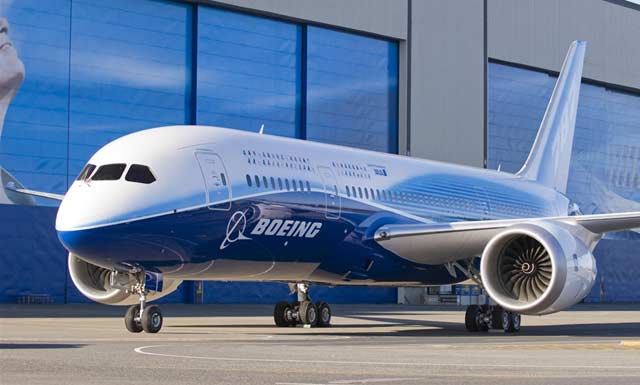Over the past few months the media has focused much negative attention on the travails of the Boeing 787 Dreamliner. While on one hand this plane has solely ushered in a new era in aviation history by virtue of it’s aggressive use of both new materials such as carbon fiber composites and the use of lithium ion batteries. Both of which were regarded as unfamiliar territory in the extent of their use on a commercial airliner. Yet on the other hand the rampant press coverage of two separate fires involving the planes lithium ion batteries have had the effect of both undermining an entire technology and diminishing Boeing’s reputation on a design and engineering level.
As a result of two different incidents in which the lithium ion batteries caught on fire, all 50 of the 787 Dreamliners in service were grounded. It should be noted and is often under reported, that the 787’s were in service for more than a year without incident. The lithium ion batteries have been used in aviation without incident in recent years although not to the degree of it’s present use in the 787 where electrical actuators have replaced the hydraulic systems that control and activate the planes moving parts. They also power the cabins air conditioning and pressurization.
Each 787 is fitted with two 32 volt 8 cell lithium ion battery packs which weigh about 40 pounds each. The combination of being lighter in weight combined with much greater energy density (twice the energy density of the previously used nickle cadmium) has made these an obvious choice. Lithium Ion also is noted for holding it’s charge longer, being able to charge faster and it’s not degrading in it’s ability to hold a charge. On the downside a condition called “thermal runaway” has been known to occur in batteries that have been damaged or overcharged and this resulted in fires and explosions in a few known cases. These incidents are often over stated or exaggerated, as was the case of the single Chevy Volt fire in June of 2011. Here, the car was intentionally crash tested and stored in a government parking lot only to catch fire weeks after the actual crash test as a direct result of damage to the battery. It should also be pointed out that the battery in that case was not properly drained as per the instructions for damaged Volt batteries. Nonetheless for several months, the media was inundated with simplistic headlines of the Volt being prone to catch fire and unsafe, which were all based on a single incident in which the recommended safety protocol was not followed.
A similar internet media frenzy has seemed to follow the 787 Dreamliner in which pronouncements of everything from the end of Lithium Ion as viable for commercial aviation to cases made against Boeing’s outsourcing of work to other firms globally. While much finger pointing and blaming will continue to happen, some questions still remain unanswered. After several weeks of investigation the clear reason for the fires remains undiscovered. This in itself may well be unsettling but over the past few weeks, Boeing announced a redesigned Lithium Ion battery which will be encased in a thicker stainless steel shell and will have it’s cells spaced further apart. In addition, the unit will have an exhaust pipe to trail off smoke in the event of fire. While the redesigned battery may well reduce the comparative weight advantage to other battery chemistries, it will retain the power density advantage and will not require a dramatic redesign of the electrical system and most importantly will allow for monitoring of the cells in the battery.
Boeing in the past few weeks conducted its first test flight since the grounding and the expects conducted numerous additional test flights with an expressed intention of pushing the planes electrical systems to the limit. Much remains up in the air in terms of the time frame for both FAA approval and the time required to replace the existing fleet with the upgraded batteries. Most likely we are looking at several months before the Dreamliner is approved for returning to service.
In no way can we downplay the seriousness of a planes batteries catching fire, but implicating an entire battery chemistry as the reason for fault as opposed to an issue specific to the design and engineering is the main issue of contention. Ultimately Boeing has taken the right approach by submitting for approval a redesigned battery which will allow for scrutiny of the cells temperature and voltage and will be inherently safer in it’s actual construction. The business of building airliners is a difficult one and at the present time we are reduced to two large global conglomerates, Boeing and Airbus, who have the resources to actualize this into a fully realized product. The introduction of a new airliner with this many new innovations is bound to suffer setbacks that will in the end be short term. Taking a longer view Boeing has brought to market a long range airliner capable of 9,000 mile non-stops that will simultaneously use 20% less fuel which will be a net positive for the industry as a whole.
Aticle Written by: David Mazovick
[nggallery id=12]


